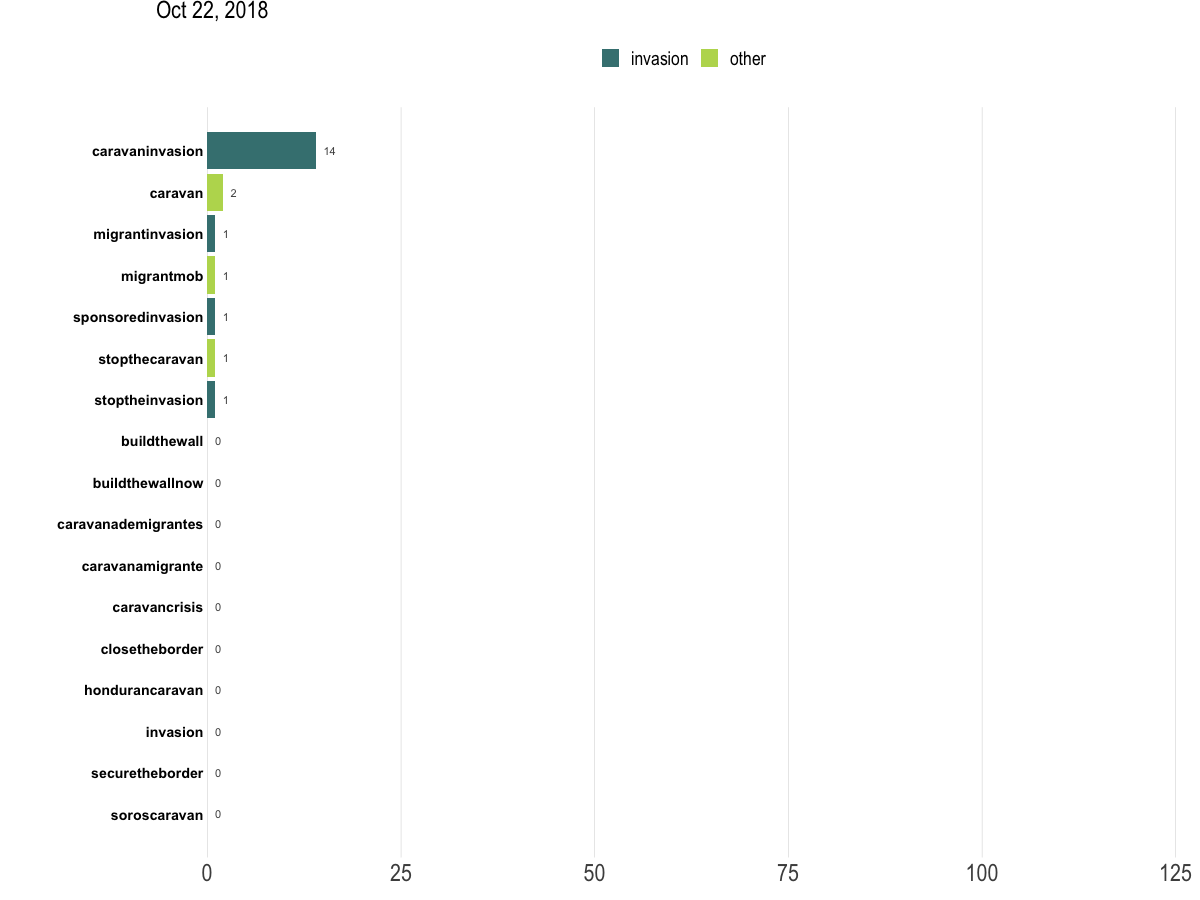An Insight Into How Bots Spread Propaganda Against the Migrant Caravan
It was October of 2018. The migrant caravan—primarily composed of refugees fleeing Honduras, Guatemala, and El Salvador—was crossing the continent. And in the United States, disinformation was spreading like a virus.
Fleeing their countries from persecution, violence, and poverty, more than 4,000 migrants crossed through Mexico last year in hopes of entering into the U.S. While intense political debates over immigration were taking place in Washington, Twitter was brewing with false and polarizing content specifically targeting the caravan and the people on it.

The CITRIS Policy Lab, the Human Rights Center, and the UC Berkeley Graduate School of Journalism worked in tandem to pinpoint the role that influential bot accounts played in spreading harassment, hate speech, and political divisiveness regarding immigration issues. For this particular analysis, we scraped all trending tweets that were posted between October 22 and November 2. During this time period, the caravan was moving through Mexico and towards the United States border. We looked specifically at tweets that used certain hashtags that were also trending at the time—like #invasion and #buildthewall. With that, we performed a social network analysis to identify the top ten most circulated bot accounts, according to Botometer—a tool used by researchers to determine the likelihood that an account is automated and not human-run. (0 = unlikely a bot, 5 = most likely a bot.)
Below is an example of an account we included in our analysis. Botometer rated “@Ohio_Buckeye_US” a 3.9 out of 5.

We ended up gathering a sample of 997 tweets, published by the ten bot accounts, and analyzed them for harassing, politically divisive, or hate speech content. To determine whether or not a tweet contained hate speech we took to Twitter’s own definition of the term, which is as stated as language which serves as “incitement to violence or hate against a specific group.”
When Bots Tweeted the Most
There was a spike in published tweets regarding the migrant caravan between October 22 and 26—particularly on the 25th. However, the content of the tweets posted during this window was different from the typical anti-immigration message. During this time, several bombs were being mailed to prominent Democratic figures, supporters, and funders. The bot accounts we studied were posting about the bombs in relation to the migrant caravan, linking the two issues.
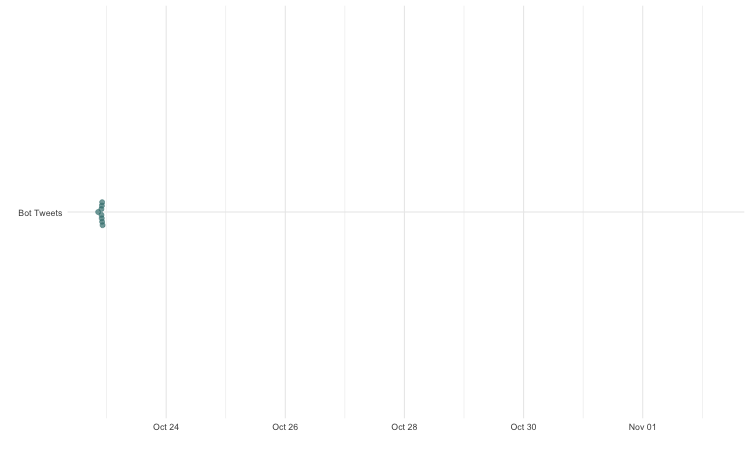
Daily Use of Hashtags
 Hover to see how many times a hashtag was tweeted
Hover to see how many times a hashtag was tweetedHarassment, Political Divisiveness, and Hate Speech
Though almost half of the analyzed tweets were found by our researchers to be both harassing and politically divisive, only a small percentage—around three percent—qualified as hate speech. Regardless of whether or not a tweet contained graphic images, threatening language, or racial slurs, if there was no language directly communicating “incitement to violence” it was not considered hate speech.
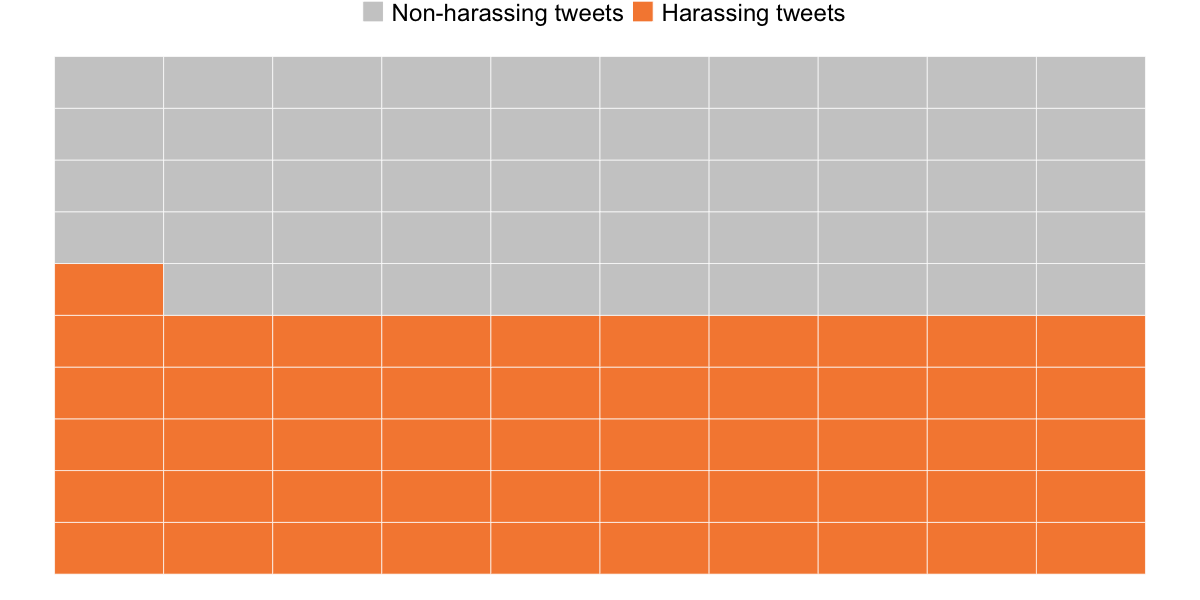
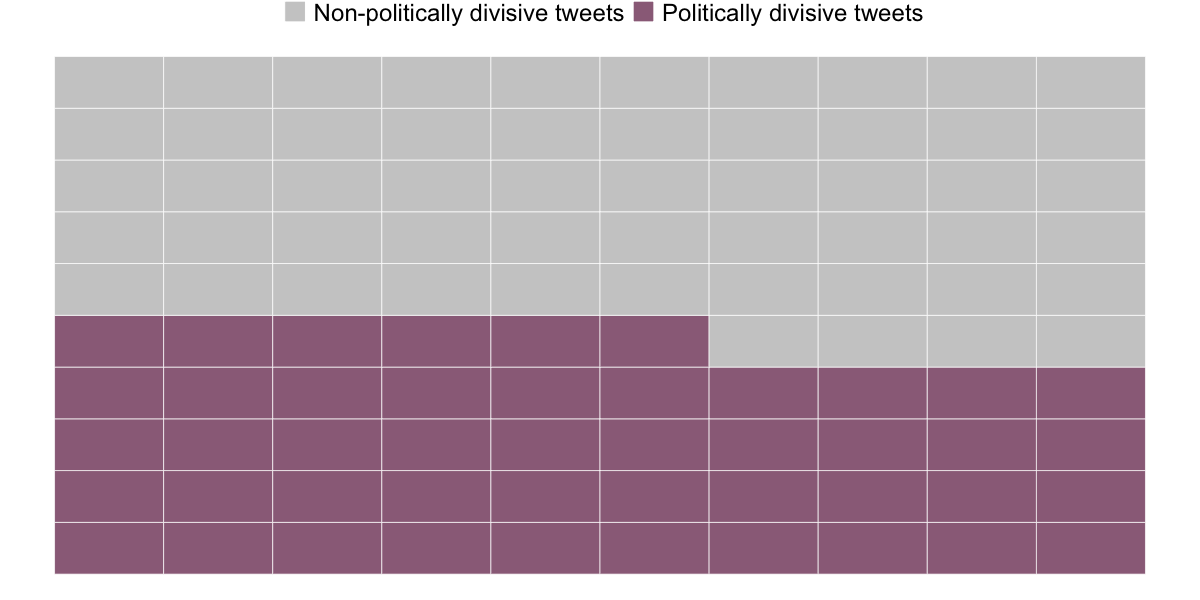
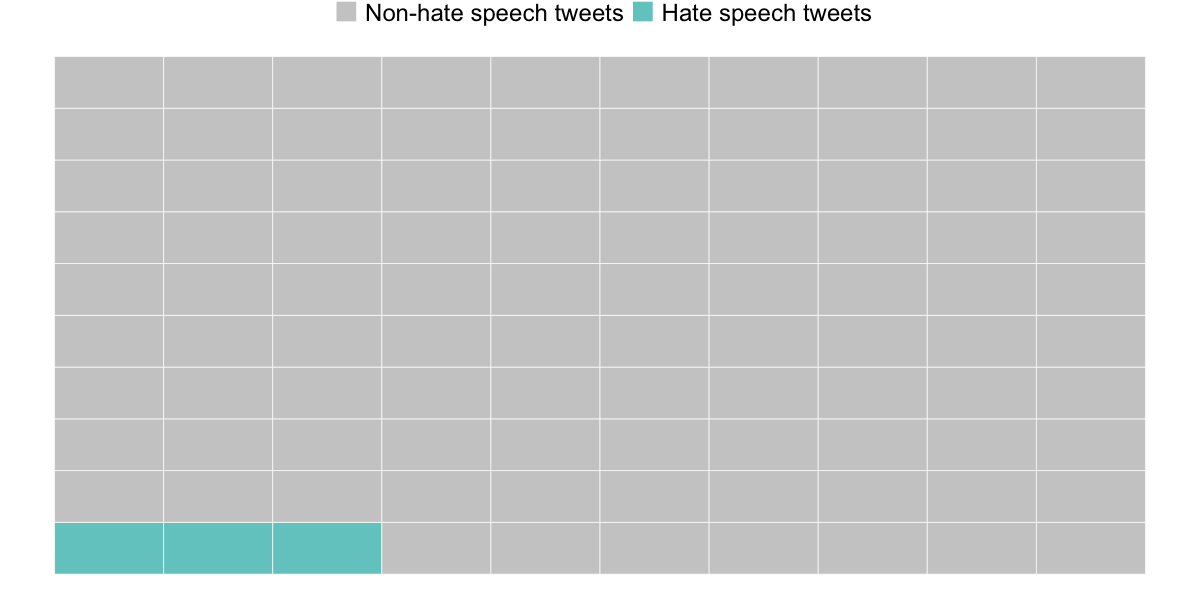
Cumulative Usage of Hashtags Containing the Word "Invasion"
As the caravan was making its way toward the U.S. border, the top trending hashtags on Twitter were #buildthewall, #caravan, and #stoptheinvasion. Overtime, #buildthewall became the most consistently used hashtag with the most growth.
